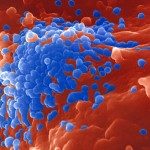Link to Pubmed [PMID] – 20546753
J. Mol. Biol. 2010 Jul;400(3):323-34
Reverse transcription of the hepadnavirus RNA pre-genome means that nascent cDNA may be vulnerable to genetic editing by host cell APOBEC cytidine deaminases that have specificity single-stranded DNA as substrate. Hepatitis B virus (HBV) is particularly vulnerable to editing by APOBEC3G (hA3G) in late-stage disease where up to 35% of genomes can be edited. Yet, the organization of the A3 locus varies considerably among mammals with a single gene for the mouse and seven genes for Old and New World monkeys, which suggests that the outcome may be very variable for other natural hepadnavirus infections. In addition, there is the powerful mouse transgenic model of HBV replication (mHBV) that has proved to be immensely useful in understanding HBV immunopathogenesis. Here, we show that mHBV is edited in vivo by mAPOBEC1 (mA1) and not mAPOBEC3 (mA3), which follows from the fact that unlike humans, the mA1 gene is highly expressed in the liver. For woodchuck hepatitis virus, an mA3 ortholog is probably operative. For HBV-infected tree shrew primary liver cultures, the editing profile more resembles that observed in humans in keeping with fact that this species belongs to the order closest to Primates. There seems to be more genetic editing in liver or cell-associated genomes than serum or culture supernatants, suggesting that too much editing of virion cDNA might impede completion of DNA synthesis.
